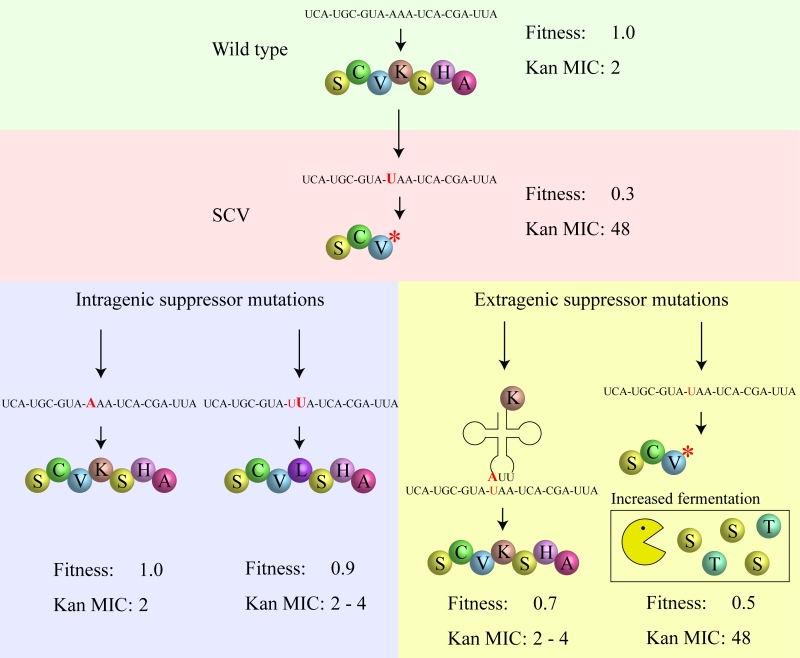FIGURE 1: Evolutionary trajectories to suppress an SCV phenotype. A hypothetical wild-type nucleotide and protein sequence associated with high relative fitness and low MIC for the aminoglycoside kanamycin is shown. In the SCV mutant shown there is an internal stop codon in gene involved in respiration (hem or men), leading to decreased fitness and increased kanamycin MIC. Suppression can occur either by intragenic mutation (direct reversion or a second-site intragenic mutation) or by extragenic mutation (for example, a translational suppressor mutation, or a mutation in srrAB). Translational suppression causes production of a pseudo-wild-type protein, resulting in increased fitness with reduced aminoglycoside resistance. In contrast, mutations that constitutively activate the SrrAB two-component system increase growth rate by increasing the production of ATP by fermentation pathways, without reducing resistance to aminoglycosides.
By continuing to use the site, you agree to the use of cookies. more information
The cookie settings on this website are set to "allow cookies" to give you the best browsing experience possible. If you continue to use this website without changing your cookie settings or you click "Accept" below then you are consenting to this. Please refer to our "privacy statement" and our "terms of use" for further information.

